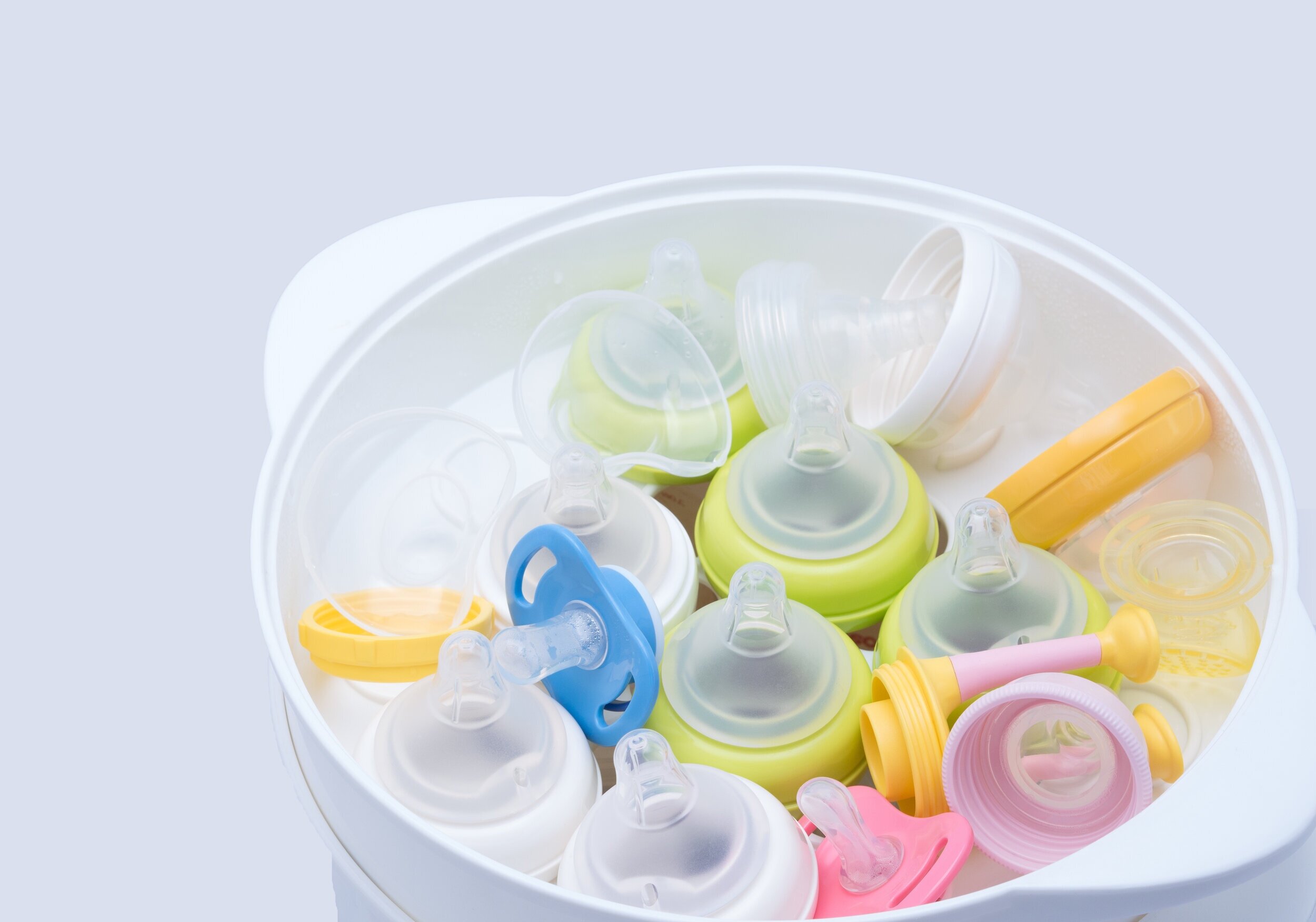
how to keep your gear squeaky clean
Infant feeding requires some gear and it’s important to keep it spick and span. Whether it’s bottles and teats, pumps and parts, dummies, tethers and other random paraphernalia, this quick guide to washing and sterilising has you covered!
Washing
Wash your items in hot, soapy water. You can wash most feeding equipment in a dishwasher if you have one; check the manufacturers guidelines to be sure though!
If doing it by hand, you can use standard washing up liquid or a baby bottle cleanser, which is usually a bit more expensive. Use a bottle brush to ensure you get into all the nooks and crannies.
This is a good time to check your teats (snigger) to ensure no tears or damage. Nobody likes a torn teat.
Sterilising
There are a few different options when it comes to sterilising so, as with feeding, just go with what works for you!
Boiling
Put all items to be sterilised in a large pan of water, making sure there’s enough water inside to cover everything. Bring to the boil and boil rapidly for at least five minutes. Top tip to ensure items remain under the water is to use a pan lid from a slightly smaller pan to weight them down!
Using an electric steriliser
There are a number of electric sterilisers available on the market raging from £25 up to around £75. Each will have their own operating instructions but they work on the basic premise of a steam sterilisation process where you add some water to the unit which is evaporated as it heats, thus sterilising your items over a short period of time.
Microwave sterilising
You can sterilise your gear in the microwave using a microwave steriliser tub that works on the principle of steam sterilising. Simply add the recommended amount of water to the steriliser, fill up with your stuff and bung it in the microwave for a few minutes as directed in the instructions. As with the electric sterilisers, the steam created by the heat of the microwave evaporating the water ensures any nasty bugs are toast!
You can also buy sterilising bags for the microwave which work the same but are disposable. these can be handy for travelling or infrequent use.
Microwave sterilisers are generally quite reasonable priced - around £15 - but make sure it will fit in your microwave before you buy! One Team Feed member took her steriliser to Currys when buying a new microwave to make sure she got one that it fitted in!
Remember also that if you open the lid immediately after the microwave pings you are likely to get burned (we learned this one the hard way too) so leave it a couple of minutes too cool before you go diving in.
Sterilising fluid
This is a proper old school method that your Mum and her Mum before her probably used, where you add a sterilising tablet to a set volume of water (see the packet of each different brand for exact volumes). The tablet dissolves in the water to create a mild bleach. Sterilising fluid is safe to use for babies; it has been used for over 70 years and is common in maternity and paediatric units. It’s a fairly cheap method too with packs of tablets from £1 - £4.
Once you’ve washed your gear, simply place each item in the sterilising fluid ensuring they are below the surface, and they will be sterile and ready for use after 15 minutes. The leading sterilising tablet brand (rhymes with Stilton) make a sterilising kit that includes the tablets and a tub that has a few handy features such as a handle, a water volume marker and a tray that keeps your items submerged. This kit costs around £!2. Equally, a large tub, basin or pan will do the job. If using your own tub or pan, a plate or pan lid that’s just a bit smaller than the one you are using will help weight items down under the water.
Your stuff can stay in the sterilising fluid until you need to use it and it doesn’t need to be rinsed. The fluid should be replaced every 24 hours.
Storage
Once your feeding equipment is clean and sterile it’s best to leave it in the steriliser until you need it. If you want to store your stuff somewhere else, wash your hands and then assemble it straight away on a clean surface. Put lids and teats on bottles and milk containers, and rebuild your pump flanges before putting them away somewhere clean and secure.



